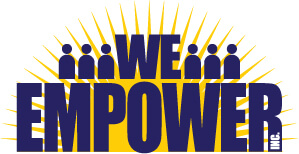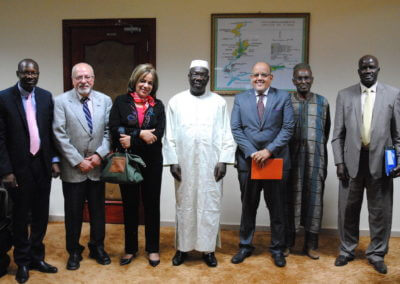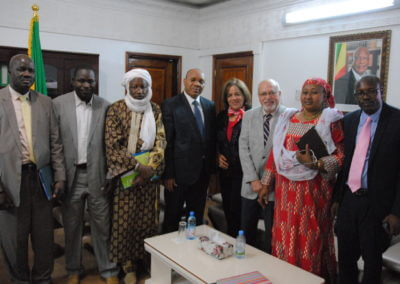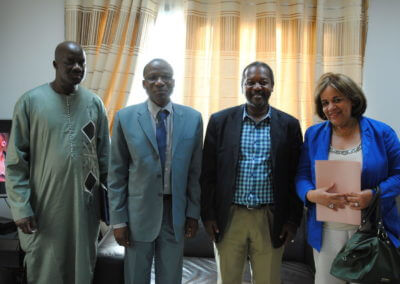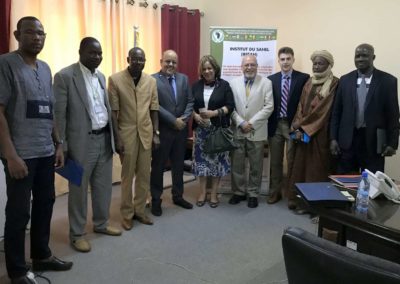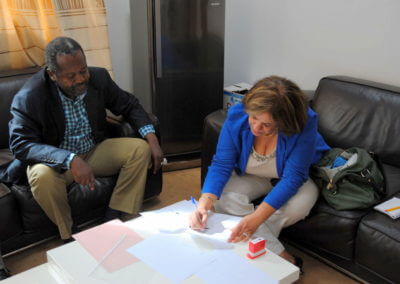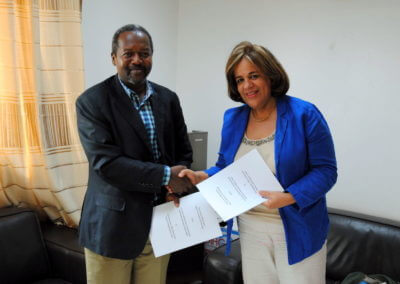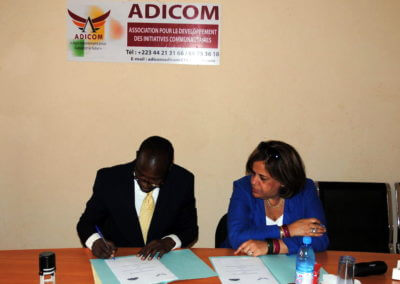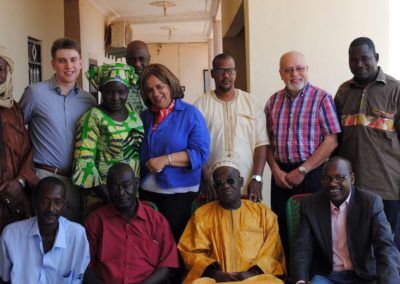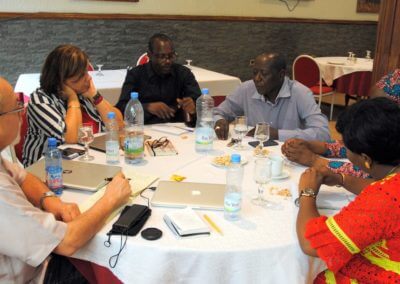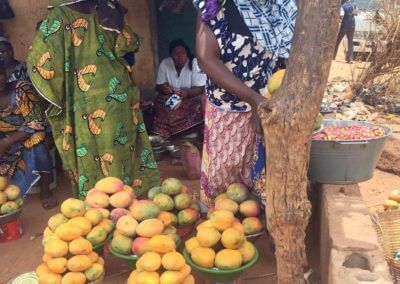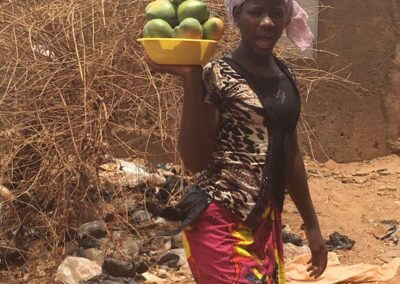Empowering Malian agriculture: Hands-on Artificial Insemination Training at CNIA
May 2018, Bamako, Mali
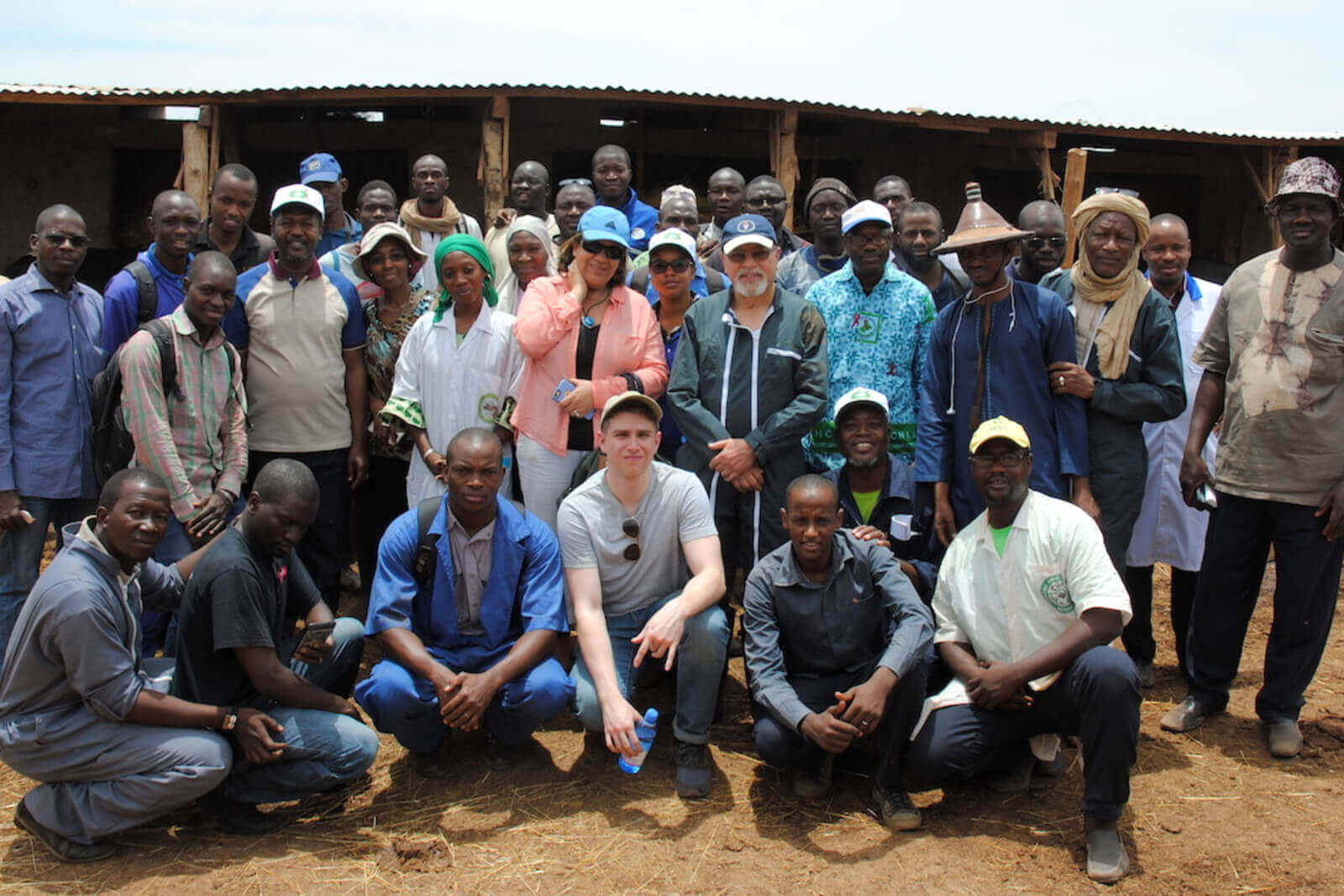
We-Empower’s representatives – President and CEO Noubia Gribi-Hussain, Vice-President of Livestock Mushtaq Memon, and Project Coordinator Ascher Kulich – embarked on a two-week trip to Bamako to provide Artificial Insemination Training, Mali in May, 2018.
The team surveyed important actors in the livestock and agriculture sectors of the country, analyzing problems and obstacles facing Malian farmers and workers.
On the visit, We-Empower forged valuable connections with the Malian communities involved in livestock and agricultural value chains.
Special thanks to CILSS, our partner, for organizing our trip in country, setting up logistics and accompanying us to the meetings.
To learn more about INSAH/CILSS and We-Empower meetings, please visit CILSS website (article in french)
Theoretical and Practical Artificial Insemination Trainings
The trip was highlighted by a two-day training at the Centre National d’Insémination Artificielle Animale du Mali (CNIA). Led by Professor Mushtaq Memon – possessing over 36 years of teaching experience in numerous countries – the training began with classroom presentations (Fig 1a, 1b) on artificial insemination (AI) and pregnancy diagnosis of cattle and goats at CNIA.

Prof Memon presenting information on cattle reproduction to trainees

Fig 1b. Thirty one students, including three women participated in the training.
Thirty one students, including three women, participated in the training, including a mix of zoo engineers, inseminators, and graduate veterinarians. Professor Memon provided an overview of the reproductive systems of cattle and goats, outlined the typical protocol for natural breeding and AI in cattle and goats, and summarized the common reproductive diseases and problems facing these animals. The CNIA students were engaged throughout each of the presentations, asking numerous questions and imploring Professor Memon to expand upon his expertise, especially as it related to livestock AI in Mali. Practical demonstration followed the classroom one, using cow reproductive tracks obtained from a slaughterhouse (Fig 2a, 2b) .

Fig 2a. Prof Memon showing the ‘placentome’, an attachment between cow’s uterus with the growing fetus in uterus

Fig 2b. Prof Memon showing about 8-months age fetus in the uterus of a slaughtered cow, which is about 1 month prior to cow’s normal calving (delivery)
These organs were utilized to identify various parts of the reproductive tracts, and to practice the passing of an AI pipette. The students in the group were shocked to find nearly full-grown fetuses, as well as partially developed fetuses in the uterus, a sign of improper or lack of pregnancy diagnosis. This practice is an excellent training tool for performing AI in a live cow. For every student in the group, including the CNIA professor, this practical training was their first experience using animal organs.
Field Trip to Kassela Farms
On the second day of the training, We-Empower and CNIA took a ride to Kassela livestock farms, a collection of privately owned farms 40 km outside of Bamako’s city center. The group visited two farms to discuss their livestock practices, as well as their cattle AI success rates. After these discussions, Professor Memon performed a reproductive examination on multiple pregnant cows, giving a step-by-step explanation for properly checking the animals via palpation through the rectum (Fig 3a, 3b)

Fig 3a. Prof Memon giving a step-by-step explanation for properly checking the animals via palpation through the rectum.

3b. Prof Memon is diagnosing pregnancy via palpation per rectum on a livestock farm in Kassela, Mali
We-Empower, VP for Livestock, Prof Memon emphasized the importance of possessing basic knowledge of the reproductive system, coupled with hands-on practice, for proper diagnoses of pregnancy and infertility. The most impactful moment of the day came when both Professor Memon and a CNIA graduate student attempted to diagnose a fetal heartbeat via ultrasonography in a pregnant cow. Due to the advanced pregnancy of the cow (about 4 months), it was not possible to determine the fetal heartbeat, as the fetus was too deep in the abdomen of the cow.

Fig 4a. Prof Memon is diagnosing reproductive problems (infertility) in a cow via palpation per rectum

Fig 4b. Prof Memon is discussing his findings of an examination of an infertile cow with the owner and the trainees
Afterwards, We-Empower, CNIA personnel, and the graduate students visited a milk collection center to inquire about the milk value chain (milk handling, transportation, etc.) and were provided information by the President of The Federation of Milk Cooperatives (Fig 5).

Fig 5. The president of the Federation of Cooperatives in Kassela is providing information on various milk tests performed at the milk collection center level.
Milk records were kept on an office wall in pen and paper (Fig 6), and common tests for bacteria and nutrient content were nonexistent. Milk production and practice in Kassela, and in Mali itself, still struggle to meet international standards, a major obstacle for the proliferation of Mali’s milk production and exportation.

Fig 6. Milk records were kept on an office wall in pen and paper at milk collection center in Kassela, Mali

Fig 7a. We-Empower President Noubia Gribi-Hussain handed certificates to the participants of the training

Fig 7b. We-Empower President Noubia Gribi-Hussain handed certificates to the participants of the training
After the two-day training, We-Empower conducted final interviews with a few students, giving them an opportunity to share their opinions on the Artificial Insemination Training programm
We-Empower Official Meetings, and signing ceremonies for partnership with governmental institutions, the private sector, and local NGOs
We-Empower_Mali2018_84
Meeting with the Minister Commissioner, H.E. Oumar Ibrahima Toure, Commissioner for Food Security
We-Empower_Mali2018_A
Meeting and working sessions with We-Empower partner CILSS/INSAH General Director, Dr. Ebbe Mohamed and his staff.
We-Empower_Mali2018_94c
MoU signing between, CNIA’s DG Dr. Traore, and We-Empower President, Mrs. Noubia Gribi-Hussain in the presence of Secretary General, Ministry of Livestock and Fishery
We-Empower_Mali2018_12
MoU signing between, CNIA’s DG Dr. Traore, and We-Empower President, Mrs. Noubia Gribi in the presence of Secretary General, Ministry of Livestock and Fishery
We-Empower_Mali2018_2
MoU signing between We-Empower Country Representative Mr. Alassane Aguili, also President of a local NGO, ADICOM, and We-Empower President, Mrs. Noubia Gribi-Hussain
We-Empower_Mali2018_92
We-Empower Office Representative in Bamako (and staff), led by Mr. Alassane Aguili, President.
We-Empower_Mali2018_102
We-Empower Value chain expert conducted a thorough mango mapping and analysis, in the production zone of mangoes. Focus was given to mango storage and shelf-life.
